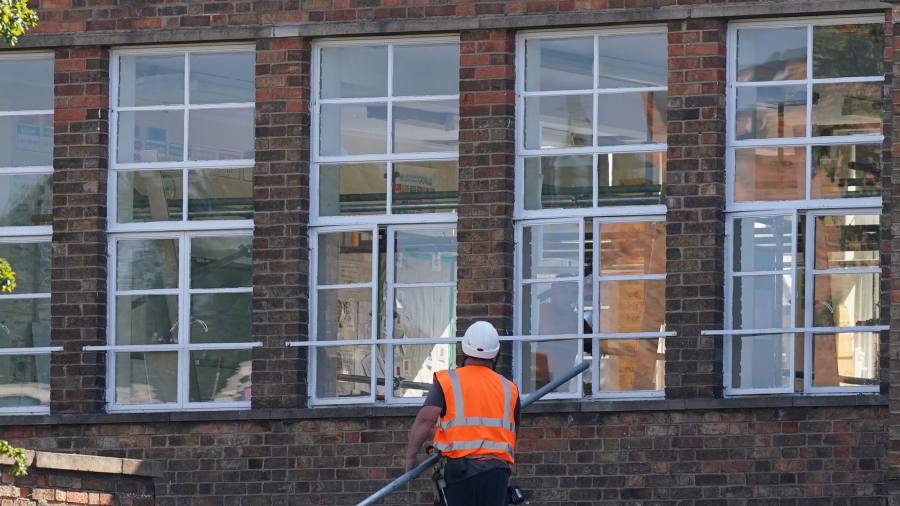
Receive free UK schools updates
We’ll send you a myFT Daily Digest email rounding up the latest UK schools news every morning.
Five years passed between the partial collapse of a Kent school roof made with a lightweight concrete and last week’s order to close buildings using the same material at more than 100 schools in England — days before the new school year. Rishi Sunak’s UK government says it was responding to new information on the risks of ageing “reinforced autoclaved aerated concrete”, but is squirming to answer questions over why the problem was not tackled sooner.
The “crumbling concrete” affair should be a wider alarm signal over the decaying state of UK schools, hospitals, courts, prisons and social housing. Britain has large fleets of public buildings in need of repair or replacement — a legacy of years of underspending on construction and maintenance.
The problem was compounded by Conservative “austerity” policies in the 2010s. But its roots go back decades. As in many parts of Europe, postwar reconstruction, baby booms and expansion of the welfare state drove a surge in public investment in Britain through to the 1970s, often employing cheap but limited-life materials such as Raac. Spending later dropped in most countries. But the decline in the UK after Margaret Thatcher’s Conservative government arrived in 1979 was sharper than most.
Though Tony Blair’s Labour government began to rebuild capital spending, a study last year found long-term average net public investment dropped from 4.5 per cent of gross domestic product in 1948-78 to 1.5 per cent in 1979-2019. Even under New Labour, Britain’s investment share was smaller than the OECD average or most G7 peers.
When public finances were squeezed by austerity, the Institute for Government notes Tory governments tended to cut capital investments sharply; cancelling renovation or repairs is easier than cutting current spending. Some flagship building projects were continued as political baubles, so maintenance was especially squeezed.
But delaying repairs can increase the work and costs later — and the risks of critical failures, such as roofs falling in. Yo-yoing spending makes long-term planning harder so, paradoxically, departments often did not spend all of their already diminished budgets.
The result is that Britain’s school estate, more than a third of whose floorspace dates from the 1950s to the 1970s, has not undergone the renewal it needed. The National Audit Office warned in June that 700,000 pupils were at schools needing major rebuilding or refurbishment — but it said the biggest structural concerns were asbestos, wiring, heating and ventilation, not Raac. Even before the “crumbly concrete” crisis, £11.4bn spending was estimated to be needed to get the school estate back into good shape.
The issue goes far beyond schools. The NHS hospital maintenance backlog is £10.2bn. Problems with buildings are further straining the overstretched courts system. A particular concern is “system-built” buildings, assembled from prefabricated components, used widely in schools, as well as council housing. The head of the UK spending watchdog has warned that problems extend to digital infrastructure, too.
This has important knock-on effects for productivity. Decaying buildings and outdated IT systems are one reason why recent increases in NHS funding and staffing have not led to a similar rise in numbers of patients treated: doctors cannot operate in a theatre where the roof is leaking.
Deteriorating postwar infrastructure is far from just a UK problem. But the Raac affair highlights that whichever party wins the next election must find funds not just to boost day-to-day public spending, but to revive capital investment too. This is not only about safety. Any government will struggle to rebuild the quality of services, and productivity, unless it can also restore the physical and digital fabric on which they depend.